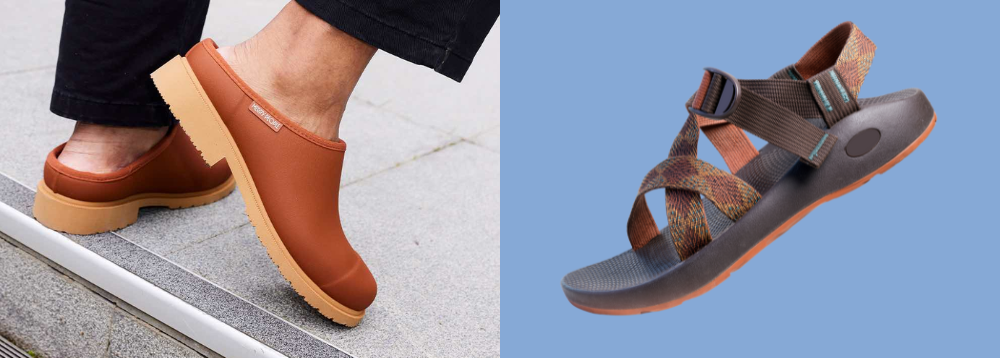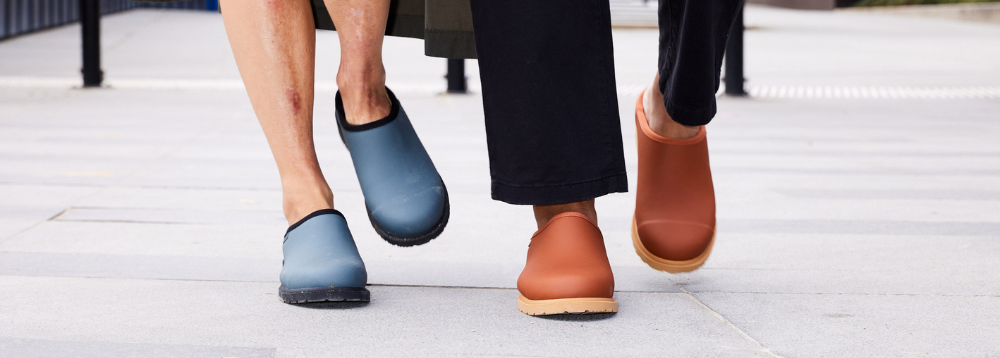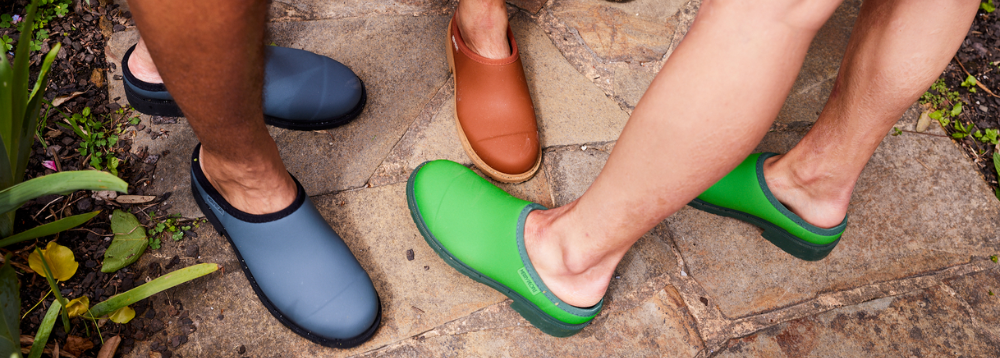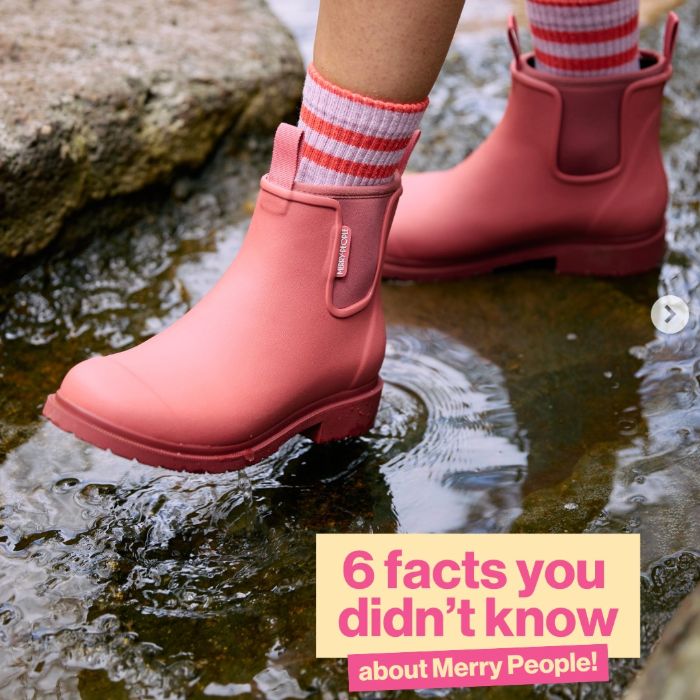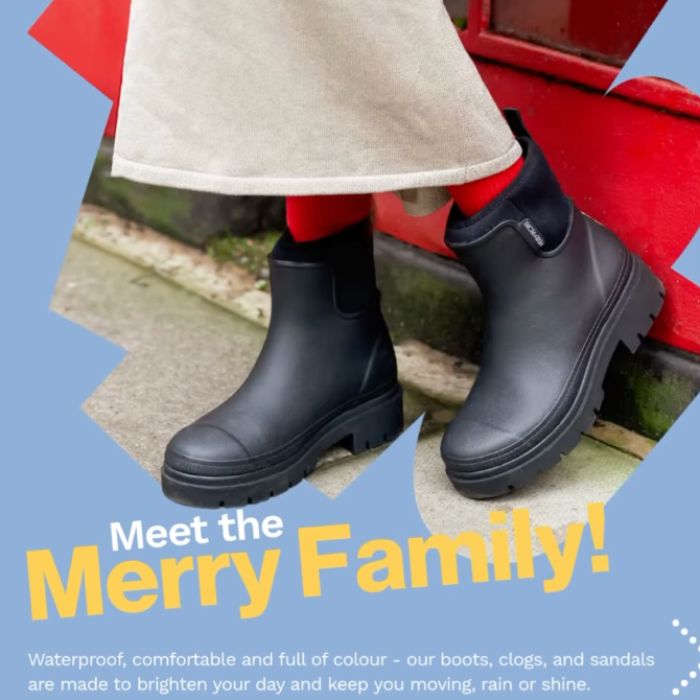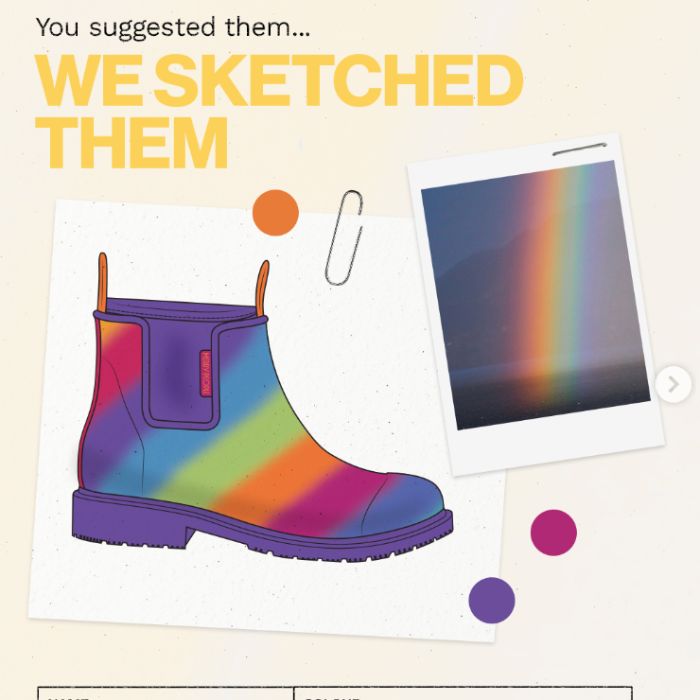Let’s compare the similarities and differences between clogs and sandals!
While clogs and sandals expose more of the foot than other shoes, the key difference between the two is that clogs cover the tops of the feet, while sandals have minimal coverage. Clogs can be more versatile than sandals, too. Their coverage makes them wearable throughout the year and they can be both fashion-forward and practical.
Overall, clogs and sandals differ in their coverage, support, and seasonality. Let’s get into the details to discover more about the similarities and differences between clogs and sandals.
Foot Coverage
Both clogs and sandals expose the ankle, and most clogs are a slip-on style that exposes the heel. While there are cute and modern open-toe sandals that have the same soles as clogs, clogs are traditionally designed to be worn with the toes and tops of the feet covered. On the other hand, the basic functionality of a sandal is to provide breathability in warmer weather when less coverage is better.
Open-toed sandals are often explicitly discouraged or prohibited in certain work environments, such as restaurants, to minimise the risk of injury. Clogs were originally designed to protect the feet of people who worked in agriculture, which is one reason why they are such a popular garden shoe today.
Arch Support
Most sandals do not provide much arch support, especially flimsy flip-flops or other strappy sandals. Generally, sandals are not recommended when working or standing for long periods because they tend to be very flat and can strain the joints and lower back. Clogs, however, were designed to match the contour of the feet. The best clogs for being on your feet all day are ones that have built-in arch support.
Proper arch support allows the feet to rest in their natural shape while inside the shoes. This helps distribute the weight of the foot evenly across the sole and takes the pressure off the feet as they support the body in a standing position. For this reason, clogs are a favourite choice among people who struggle with foot pain or who work long shifts in hospitals, schools, or anywhere they are on their feet for hours.

Seasonal Wearability
Clogs are still summer-attire appropriate, with their practical slip on and slip off ability! While they’re not as breathable as sandals, the easy slip-on/slip-off design of clogs is wonderful for warm days when you want the option to be barefoot!
Clogs can easily transition to cooler weather with the addition of a cute pair of socks. This allows the clog to keep your feet warmer on chilly days. They are not the best choice for snow due to the exposed ankles, but they are great shoes for both the spring and fall months. And don't think we've forgotten about socks and sandals! This pairing is also a fun and quirky way to style your summer shoes to head into fall.
Materials
Clogs have come a long way since they were made entirely from wood! Modern clogs are made in a variety of materials, from leather to rubber.
Rubber clogs up the versatility factor in multiple ways. They perform better in light rain and are ideal for working outside when there is exposure to wet conditions (think gardening!).
Even though sandals, like flip flops, are commonly made with a mix of materials including rubber and hard foam, the soles of these flat shoes are notoriously slick. Clogs, like our Billie Clogs, have rubber soles with enhanced traction soles that provide friction against hard surfaces to minimise the risk of slips and falls.

So, Clogs Versus Sandals!
Both clogs and sandals can be a great addition to your everyday wardrobe, and there’s no reason you have to pick one or the other! We hope this has been a helpful breakdown of the similarities and differences between clogs and sandals. If you’re interested in giving clogs a try, shop our Billie Clog range.



